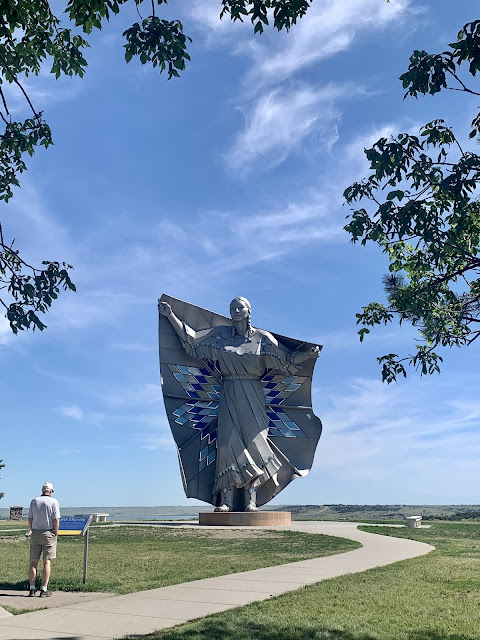Day 30: June 22
We visit the Minidoka National Historic Site and Twin Falls
Hard to believe that with the foot traffic that we happened to see at the Minidoka Japanese Internment Camp from WWII, that it wouldn’t be a benefit both to America’s history and her people to have a couple of rangers there to staff it and answer questions. Currently, it’s staffed Friday, Saturday, and Sunday 9-5.
The Minidoka Relocation Center operated from August 16, 1942 to October 26, 1945. From the plaque in this area: “Here 10,000 Japanese American victims of wartime hysteria occupied a 950-acre camp, living behind barbed wire and under charmed guard. May these camps serve to remind us what can happen when other factories supersede the constitutional rights guaranteed to all citizens and aliens living in this country.”
The first inhabitants were brought in August, before the camp was even completed. There were no sanitary toilets and dysentery was rampant for months until facilities could be built. The winter winds would blow snow inside through cracks between the boards in the walls and the people living inside would stuff the cracks with pieces of fabric to try to keep warm.
There was a remnant of a baseball field used by the residents. I remember a PBS documentary that told about the art that was produced at these camps by the Japanese people held there. Writing, drawing, painting all took place to lend a facade of normalcy to life.
 |
| There were 8 original watch towers built around the perimeter of the camp in order to keep the Japanese citizens “under control”. As far as we know, they were never manned, but they could be seen from all over the camp. These sentry towers were the most important symbol of confinement; no other single factor had as serious effect on the the residents’ morale. They were a constant reminder of their loss of freedom. |
 |
| Root cellar remains. The mounded dirt on the sides helped to keep root vegetables and cabbages cool in summer and unfrozen in winter. The internees worked the land and each year they were there, they produced more food than the previous years. |
 |
| The remains of the “welcome” center, along the Clover Creek, near Jerome, ID. Of the 110,000 Japanese brought here, in 1943-45, over 1000 young people from the camps went to serve their country in the War. 73 died. |
 |
| One of the remaining barracks; this one, a men’s barrack with the men’s mess hall to the left. Foundations remain of storage buildings and machine repair shops. There is very little here that remains intact from the 1940s. No one should ever forget what we did to our own people. It was important to me to be able to honor the sacrifices made by visiting the Minidoka site. (What we did to the Native Americans is another depressing discussion.) |
 |
| A view down the Snake River Canyon |
 |
| Taken from the same vantage point as the photo, above, this one looks up the canyon, under the Hansen Bridge. |
 |
| Other than Shoshone Falls (in Twin Falls, ID) on the left, I count SIX OTHER waterfalls in this photo. Can you find them all? |
 |
| View looking under the Perrine Bridge from the TF Visitor Center |
 |
| Snake River |
 |
| The Twin Falls of Twin Falls (I think they were called Twin Falls because they split into two, but here they look like one big waterfall!) |
 |
| Photo taken UNDER the Perrine Bridge |
 |
| Filed under: things you see on the highway (in this case a large blade from a wind turbine 😮) |
 |
| Horses in the shade of a cottonwood tree, seen while leaving the area this morning |
 |
This one is especially for Andrew: a potato field
Tomorrow we head to Oregon! Stay tuned! |

















Beautiful Snake River scapes. The internment camp pictures are so important, so sad, actions so wrong in our rear view mirror. What all can we not see clearly today?
ReplyDelete